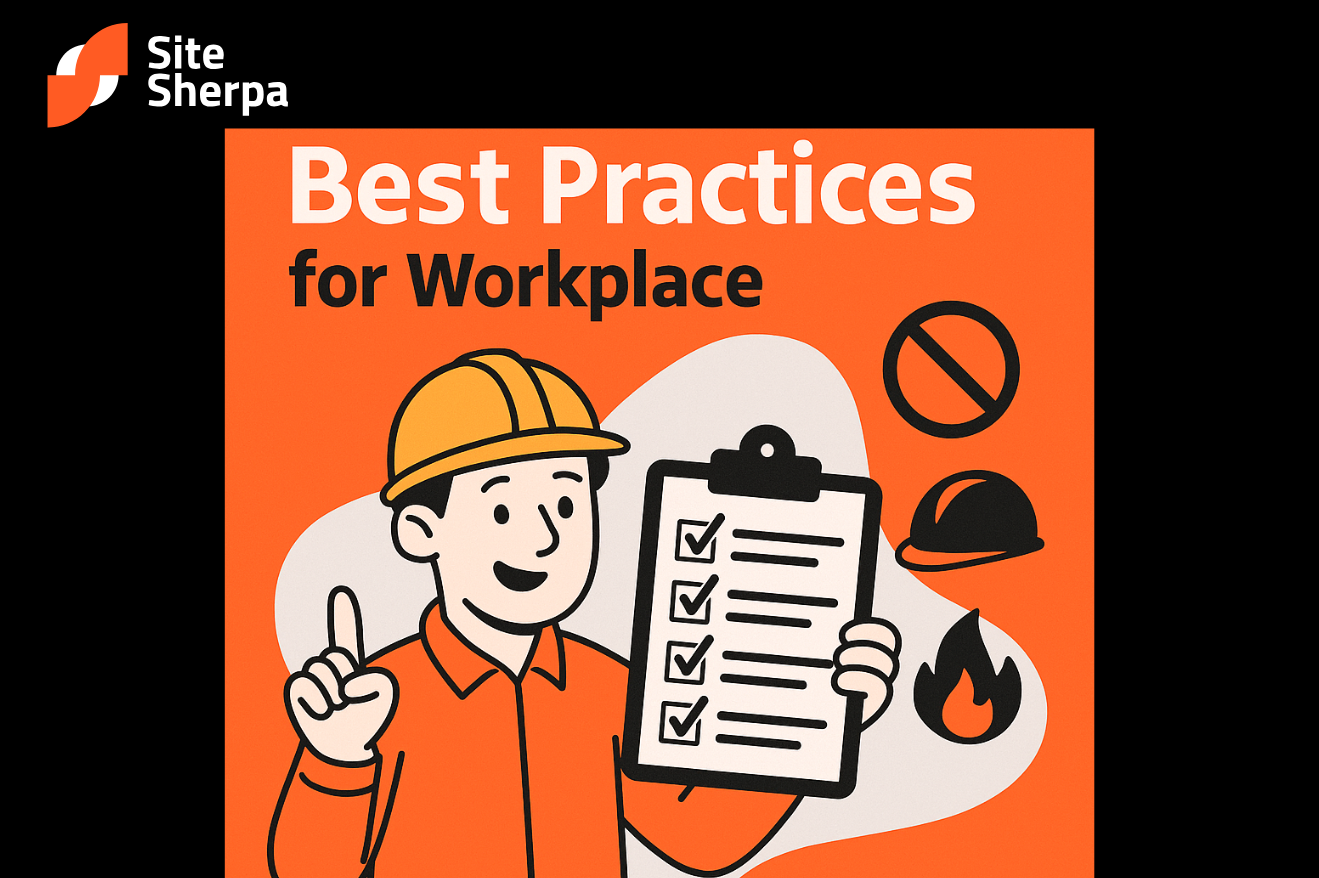Best Practices for Workplace Safety
Tips to Enhance Workplace Safety and Reduce Risks
Workplace safety is more than just providing protective gear; it requires proactive measures, structured inspections, and well-defined emergency response strategies. Employees are often exposed to hazardous materials, flammable substances, and other workplace risks that can lead to serious injuries if not properly managed. Let's explore how SiteSherpa empowers businesses to protect workers, reduce risks, and foster a culture of workplace safety through Workplace Inspections & Audits, ensuring long-term compliance and operational efficiency.
Ensuring workplace safety requires a strategic and expert approach. SiteSherpa helps businesses create safer work environments through structured workplace inspections and audits, which detect potential risks before they escalate into serious incidents.
Supporting Business Safety
Establishing clear workplace health and safety protocols helps prevent hazardous exposure, reduces accidents, and ensures compliance with industry regulations. Here are a few ways that SiteSherpa can help your business:
- Identifies Workplace Hazards: Inspections uncover risks related to fire hazards, toxic exposure, chemical handling, and inadequate ventilation.
- Ensures Regulatory Compliance: Businesses must meet workplace health and safety requirements. SiteSherpa helps identify compliance gaps and provides actionable solutions.
- Provides Tailored Safety Solutions: Every workplace has unique risks. SiteSherpa offers customized recommendations to mitigate hazardous exposure.
- Strengthens Emergency Preparedness: Audits assess current response plans and ensure businesses have proper escape routes, emergency equipment, and trained personnel.
With SiteSherpa’s workplace audits, businesses can proactively prevent hazards, reduce workplace injuries, and improve employee wellbeing.
Essential Safety Practices to Minimize Hazardous Exposure
Preventing hazardous exposure in the workplace requires more than just protective equipment. It demands a proactive approach to identifying risks, enforcing safety measures, and educating employees. Here are essential safety practices to minimize hazardous exposure and protect workers from potential harm.
Implement Proper Safety Training
Employees must be trained to recognize potential hazards, follow prevention protocols, and respond effectively in emergencies. Regular safety training, fire drills, and workplace health and safety education ensure that workers can quickly identify risks and take the right action to protect themselves and others. Employers must supply industry-standard PPE, including flame-resistant clothing, gloves, respirators, and face shields, to reduce the risk of burns, inhalation injuries, or toxic exposure. Ensuring proper PPE maintenance and regular inspections guarantees workers the best protection.
Control Hazardous Substances and Flammable Materials
Workplaces must limit exposure to flammable dust, vapors, or toxic chemicals by implementing proper ventilation systems, regular cleaning schedules, and strict handling protocols. Employers should enforce clear safety rules to minimize ignition sources, prevent chemical leaks, and avoid airborne contamination.
Establish a Strong Emergency Response Plan
Even with preventive measures in place, accidents can still happen. A well-defined emergency response plan ensures workers know how to act in hazardous situations. Here are some suggestions we highly recommend to have a solid emergency response plan:
- Train employees on proper fire suppression techniques
- Maintain accessible first aid stations and emergency equipment
- Establish clear escape routes and conduct routine evacuation drills
- Ensure that employees can administer first aid while waiting for medical assistance
Provide Immediate and Effective Hazard Exposure Treatment
Quick medical response is essential when workers experience burns, chemical exposure, or inhalation of hazardous substances. Employers should ensure that first aid responders are trained and that employees follow proper emergency treatment protocols.
- Cool burns with clean, lukewarm water and never use ice
- Remove loose clothing, but avoid pulling off anything stuck to the skin
- Seek medical attention immediately for severe injuries to prevent complications like infection or shock
By enforcing these safety practices, businesses can significantly reduce hazardous exposure risks and create a workplace prioritizing employee wellbeing.
Site Sherpa provides expert workplace inspections and audits that help businesses identify and eliminate workplace hazards before they cause serious injuries.
Businesses can stay compliant by conducting regular safety audits, keeping up with industry regulations, and implementing proper risk management strategies. Providing employees with the right training and protective equipment helps maintain a safe working environment.
Businesses can improve workplace safety by identifying hazards through regular risk assessments and enforcing strict safety measures. Additionally, providing proper training ensures employees understand how to handle hazardous materials and respond to emergencies.
Related Content
Join Our Newsletter
Receive expert insights, safety updates, and the latest updates in our services and apps. Stay ahead of workplace safety, compliance, and operational efficiency delivered straight to your inbox.


.png)
.png)
.png)
.png)
.png)
.png)
.png)
.png)
.png)